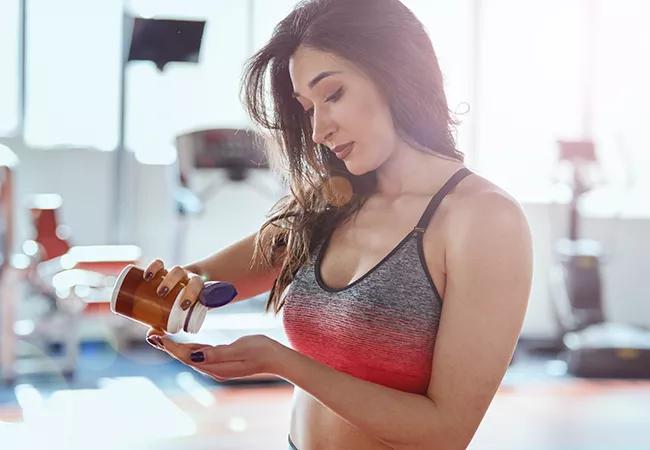Risk increases due to dietary restrictions and menstruation

Up to 35% of female athletes (and up to 52% of adolescent female athletes) have iron deficiency. While iron deficiency doesn’t necessarily mean iron-deficiency anemia (a low concentration of red blood cells or hemoglobin), it’s still a concern for endurance athletes — or anyone who exercises, says Caitlin Lewis, MD, of Cleveland Clinic Sports Medicine Center.
Advertisement
Cleveland Clinic is a non-profit academic medical center. Advertising on our site helps support our mission. We do not endorse non-Cleveland Clinic products or services. Policy
“Iron deficiency in women athletes is not discussed enough,” she says. “It’s definitely under recognized in both adults and teens, including anyone who has menses.”
Female athletes are at high risk for iron deficiency not only due to blood loss with menstruation, but due to food restrictions that are common when training for athletic competition.
“Even if they’re eating iron sources such as legumes and fortified foods, females often are not consuming enough iron, especially if avoiding red meat,” says Dr. Lewis. “The body absorbs iron from animal sources at a much higher rate than iron from nonanimal sources.”
Iron is important for the formation of red blood cells, but also for energy production (metabolism) and brain performance, including concentration and cognition. Patients with low iron commonly present with complaints of low energy, fatigue, decreased endurance or generally reduced athletic performance.
As part of a complete workup, Dr. Lewis assesses:
Low serum ferritin and low serum iron can indicate iron deficiency. Low hemoglobin and high TIBC can indicate iron-deficiency anemia.
“There’s been a trend in cross country coaches and other endurance coaches asking physicians to assess ferritin levels in all their athletes,” says Dr. Lewis. “But determining iron deficiency requires more than that. Ferritin levels can be falsely normal, and normal ferritin levels can be masked as deficient or elevated.”
Advertisement
In addition, Dr. Lewis does not advise checking levels in asymptomatic patients.
“You don’t check it just to check it,” she says. “We don’t want to unnecessarily supplement our athletes. I may check iron levels in professional or elite athletes, but not across the board, not even for my college athletes.”
If iron deficiency or iron-deficiency anemia is diagnosed, the next step is identifying the cause. Dr. Lewis evaluates possible causes including:
In addition to addressing the cause, iron supplementation usually is advised.
“I prefer whole-food supplementation, but it’s often difficult to consume enough iron through food, given dietary preferences,” says Dr. Lewis. “Most female athletes should be consuming 18 mg of iron per day. Considering that a 120 g hamburger patty provides only 3.5 mg of iron, it’s no wonder that iron deficiency is so common — and that so many female athletes take iron supplements.”
Basic supplementation is 100 mg of iron per day, she says. If gastrointestinal side effects like upset stomach and constipation are troublesome, every-other-day supplementation may be just as effective.
Dr. Lewis advises her patients to take oral iron supplements with orange juice since vitamin C assists with iron absorption. If oral supplementation isn’t tolerated or if iron isn’t being absorbed sufficiently through the gut, iron infusions can be provided intravenously.
Advertisement
Patients should be cautioned about banned-substance contamination in over-the-counter supplements, especially if they anticipate drug testing, she notes.
“Athletes must ensure that the supplements they are taking are pure,” says Dr. Lewis. “Encourage them to check third-party verifiers, even for supplements purchased from chain pharmacies or supplement stores. Manufacturers sometimes add substances to boost the perceived effectiveness of their products. Even some electrolyte packets have been found to contain banned substances.”
Advertisement
Advertisement

ACOG-informed guidance considers mothers and babies

Prolapse surgery need not automatically mean hysterectomy

Artesunate ointment shows promise as a non-surgical alternative

New guidelines update recommendations

Two blood tests improve risk in assessment after ovarian ultrasound

Recent research underscores association between BV and sexual activity

Psychological care can be a crucial component of medical treatment

A multidisciplinary approach facilitates timely diagnosis and better treatment